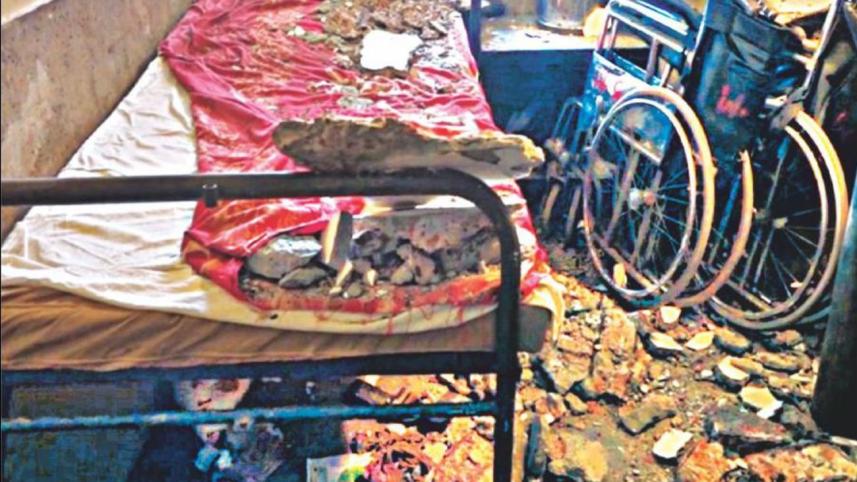Unfortunate injuries from plaster collapse

What doesn't kill you makes you stronger, as the saying goes. After the injuries of two nurses in an unfortunate incident on Wednesday, in which plaster came off the ceiling of the old building of Noakhali General Hospital and fell on them, the least we can expect is that the victims will recover from their injuries and the trauma of the incident—which might leave them struggling with upsetting emotions for some time—and come back stronger. In a similar fashion, only two days ago, seven schoolgirls were also injured as chunks of plaster of the ceiling of their old school building in Rangpur city fell on them. It's a miracle that the incidents didn't lead to graver consequences. But a sense of relief may be short-lived if we take these incidents as just engineering disasters.
The fact is, in both cases, the relevant authorities were warned about the state of the buildings and the likelihood of a collapse. But they refused to heed the warnings, leading to the tragedies. That buildings in a decrepit or vulnerable state can lead to fatal outcomes has been proven on many occasions in the past, most notably by the Rana Plaza tragedy for which use of substandard construction material has been identified as a contributing factor, a vulnerability reportedly shared by many other buildings also. The latest incidents should, therefore, serve as a wake-up call for the authorities that no structure is infallible and that early signs and warnings are a very important part of tackling a disaster. We hope the administration will learn from these incidents of collapse and properly implement the National Building Code across the country. Unless we do so, there's no telling when the next tragedy will strike or what consequences it may have.



 For all latest news, follow The Daily Star's Google News channel.
For all latest news, follow The Daily Star's Google News channel.
Comments